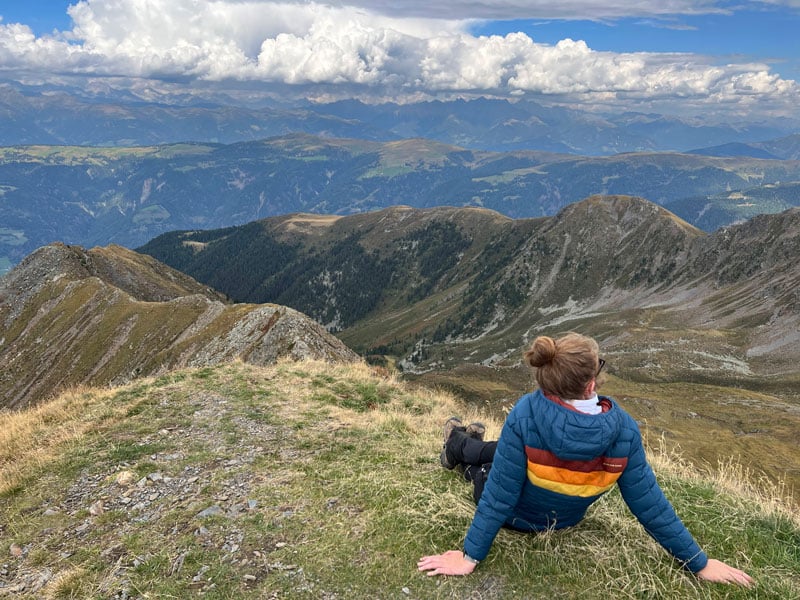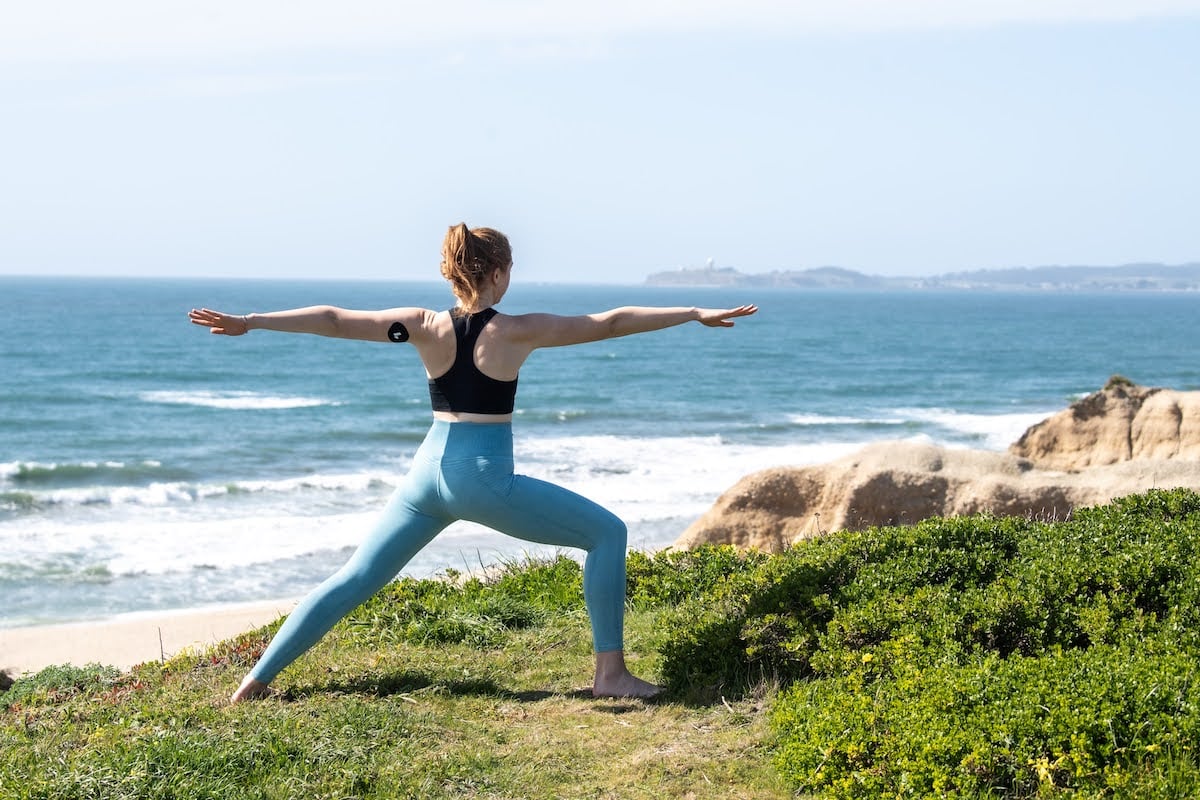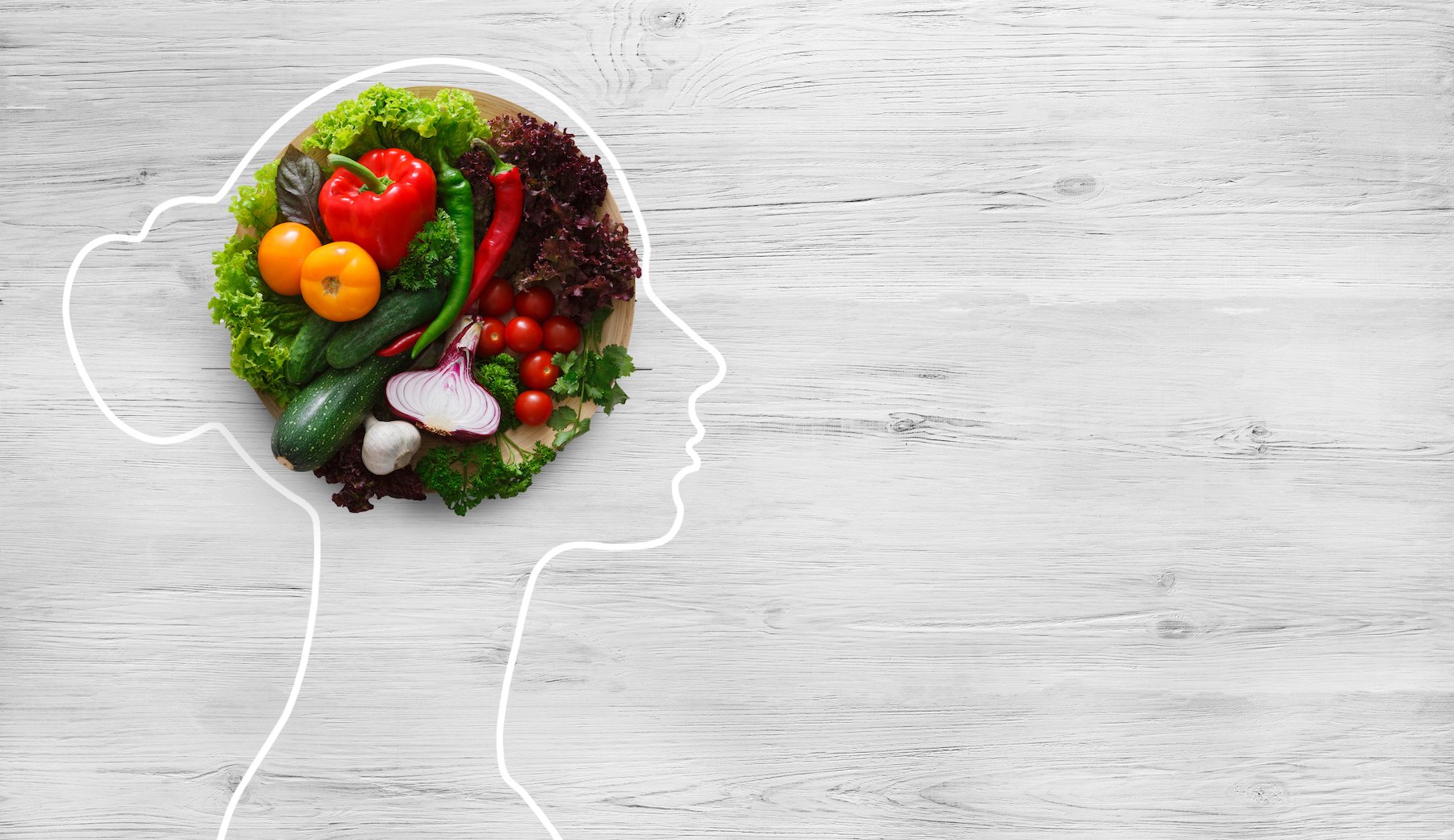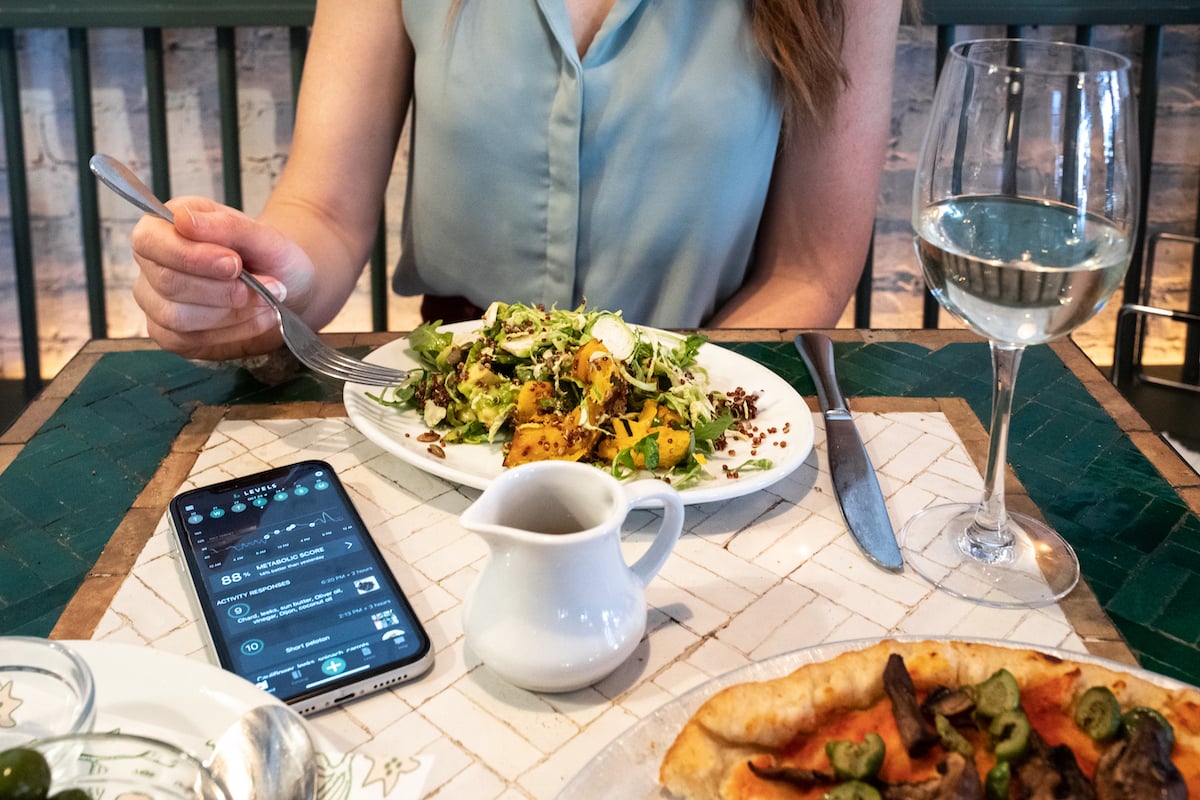I hope you had a wonderful summer! I took a hiatus from my newsletter last month while taking a couple of weeks off work to unplug and backpack through the Wind River Range in Wyoming and hike in the Dolomites!
Coming off some time away, I’m dedicating this newsletter to how to make leisure time as metabolically healthy as possible. Whether you’re enjoying an afternoon off, traveling for a week, or relishing a staycation, I hope these learnings help you maximize your free time to support health. We’ll cover:
- The value of unplugging: Activating the brain’s default mode network (DMN) generates empathy and creativity, and it makes you more resilient to metabolically damaging burnout.
- The benefits of extended physical activities: Physically active leisure time can stimulate neuroplasticity and mitochondrial biogenesis.
- The boost we get from time outdoors: Spending time in nature supports our circadian biology and gets us to use our neglected panoramic vision (a little-known unlock for stress relief.)
- Plus, eating healthy while traveling: How to get nutrients in despite being on the road.
At the end, I’ll share an anecdote from my visit to Italy this summer. I learned what happens when I disrupt my health behaviors with jet lag, a YOLO (“you only live once”) approach to eating and drinking (i.e., lots of pasta, prosecco, and parmesan), and a lapse in my usual mind-body practices. It wasn’t pretty, but it was a great reminder of how daily habits make all the difference for maintenance of optimal physical and mental health.
Why does it matter how we spend our time away from work?
As a society, we are working harder and more hours than ever and our mental and physical health is plummeting, so finding ways to recharge our minds and bodies when we have time away from work is maximally important.
Nearly 80 percent of more than 1,500 workers surveyed in a 2021 American Psychological Association questionnaire reported work-related stress in the past month. Repeated work-related stress can cause burnout. And burnout can occur if you don’t take breaks and unplug. The World Health Organization defines burnout as having three characteristics:
- A sense of exhaustion or energy depletion
- Negative feelings or a sense of distance toward one’s job
- Reduced productivity
Burnout is damaging to metabolic health. For example, burnout may be associated with insulin resistance over time, even when someone makes positive changes to diet and physical activity. Burnout is also associated with metabolic syndrome. And more broadly, burnout diminishes our ability to shine our light and have the positive impact on our community and world that we want to have. Figuring out how to support our health during our time outside of work is a resilience superpower.
I’ve experienced burnout before—as a surgical resident. I thought giving everything to my work was heroic, but doing so left me physically and mentally depleted. My burnout stemmed from working in a system I found dysfunctional (i.e., every year the number of sick patients increases and life expectancy decreases, even as we spend more on healthcare.) I was also working unsustainable hours in an environment of chronic stress and erratic sleep.
Now I prioritize time to recharge and commit to practicing the stress resilience strategies (i.e., therapy, breathwork, and HRV monitoring) described in my previous newsletter: How the mind controls metabolism. A phenomenal book that lays out a recipe for professionals to avoid burnout is The 15 Commitments of Conscious Leadership.
Learning #1: The value of unplugging
At Levels, each team member takes off a minimum of one week per quarter. That means an employee shouldn’t check or reply to emails or other work-related communications at all. Why do we do this?
We believe in the equation that stress + rest = growth.
Think about someone who is training for a marathon and doing regular 10-plus mile runs. They must incorporate recovery days to reap the training benefits. Repeated wear and tear without recovery will deplete the muscles and joints. We believe the same is true for employees. We challenge ourselves mentally with deep work and believe that brains need time to recover to come back stronger rather than drained.
I like to plan activities that intentionally have no cell service or internet – or would be damaging to my computer if I brought it – like backpacking, water sports (paddle boarding, rafting, kayaking), or bike camping. These activities necessitate leaving screens behind, so I’m forced to unplug. Here are some of the physiological benefits of unplugging:
Activates the default mode network: Unplugging from deep work helps us activate the default mode network (DMN) and other resting-state networks. The DMN is a network of brain regions that work together to form our internal world. The network is concerned with our identity or autobiographical information, our understanding of others as well as our empathy for them, and our ability to reflect on our life (past, present, and future), our values, and lessons we’ve learned. When we’re focused on the outside world—such as work projects, emails, and meetings—the DMN is suppressed. The DMN is active when your mind gets to wander. Ultimately, the DMN helps us grow and establish equilibrium after periods of intense mental work. Without downtime to activate the DMN, we struggle to process what we’ve learned, to problem solve, and to ruminate—all things that are important for personal and professional growth. Letting the DMN do its thing may allow for those mysterious “epiphanies” to emerge that catapult our lives to the next stage of wisdom. Given the complex challenges we face in society today, I believe that taking time to invest in epiphanies, empathy, and reflection (and therefore the DMN) are all critical for the betterment of all.
Promotes neuroplasticity: Changing your environment or engaging in a novel experience—whether that’s taking up birding, trying your hand at watercoloring, or immersing yourself in an unfamiliar culture—encourages neuroplasticity. Neuroplasticity is the brain’s ability to form and reorganize synaptic connections or neural networks. Neuroplasticity can help prevent cognitive decline and enhance brain fitness, functioning, and creativity. For example, research suggests that having to adapt to a new culture can cause you to be more creative; even just thinking about the experience later has this effect.
Figuring out how to support our health during our time outside of work is a resilience superpower.
Dopamine hygiene: If you’re taking a break, it’s worth trying to unplug from screens in general. In the books Dopamine Nation by Dr. Anna Lembke and Stolen Focus by Johann Hari, both authors talk about smartphone and tech addiction. The things we do on our smartphones—whether scrolling through social media, repeatedly checking our emails and texts, or online shopping—trigger dopamine, the neurotransmitter associated with motivation and drive. If we “spend” dopamine release on activities like scrolling, we find ourselves with lower motivation to pursue the important activities in our life that also require motivation. By just being, instead of engaging with your smartphone to fill a perceived void, you can activate the DMN and recharge your brain, while also improving focus.
Organizational resilience: At Levels, we also emphasize the importance of paid time off to entrench organizational resilience. If team members are gone at regular intervals, it forces the team to work well in an employee’s absence, which encourages good habits of process and documentation. Effectively setting up systems to let the wheels keep rolling on your projects while you’re out is a company superpower. You can learn more about our workflows in our Levels Productivity Series on Youtube or our Levels Culture Handbook.
Learning #2: Prioritize movement during your leisure time
Time away from work—whether it’s an afternoon or a week—can be an opportunity to engage in vastly more physical activity than our regular work days might allow. I’m a proponent of building exercise into my time off. I do this by scheduling hikes and walks with friends, doing yoga or fitness classes when I’m with my Levels teammates, or planning an entire trip around a dedicated physical activity, like hiking or kayaking.
Jen, one of our Levels journalists, likes to schedule vacations around running a long race in a new location. Or she finds unique running routes wherever she goes. I always peruse the AllTrails app and hiking blogs in any new place I’m visiting. I also like to sign up for organized wilderness trips so I can’t back out! For my vacation this year, I backpacked in Wyoming with the National Outdoor Leadership School (NOLS), which exposed me to both cognitive challenges (like topographic map reading) and physical challenges (frigid river crossings!).
BDNF: A full day or trip focused on movement has some brain benefits. Prolonged aerobic exercise increases levels of brain-derived neurotrophic factor (BDNF). BDNF is a protein that has been shown to increase cognitive function while also mitigating depression and anxiety. It helps us make long-term synaptic connections and is involved in new neuron development into adulthood.
Mitochondrial function and density: An extended hiking trip has metabolic benefits. Mitochondria regulate energy metabolism and all aspects of cell biology. Mitochondrial dysfunction, on the other hand, is associated with insulin resistance, Type 2 diabetes, and many other disease processes, including cancer. Mitochondria form large networks in skeletal muscle cells to ensure proper production and energy during activity. Prolonged and regular low- to moderate-intensity aerobic exercise encourages mitochondria to adapt to the body’s sustained efforts. Therefore, endurance activities, like a long hike or bike ride, can increase the mitochondria per gram of tissue as well as improve mitochondrial composition. These factors increase mitochondrial functioning, which can not only boost your capacity for exercise but also improve your overall metabolic health.
Mood: Moving improves mood, so spending time away from work being physically active is a great way to support your resilience and sense of well-being when you head back to work. A Cochrane review meta-analysis entitled “Exercise for Depression” looked at exercise compared with pharmaceutical interventions for depression, and found that there was no difference between exercise and drugs for treatment of depression (in my opinion, this should be front page news!). Aim for at least 150 minutes a week of moderate aerobic activity plus muscle-strengthening activities at least two days per week. Every step you take is an investment in your mental health.

Learning #3: The importance of time outdoors
Nature lowers stress biomarkers: Research shows that spending just two cumulative hours a week in the outdoors can boost one’s own assessment of health and well-being, according to a recent study. Possibly, the boost is related to the fact that levels of two stress biomarkers decrease when we spend time in nature. In one study, researchers asked 36 city dwellers to spend 10 minutes or more in nature three times a week for eight weeks. Throughout the study, participants occasionally provided saliva samples before and after their nature exposures. After a nature experience, participants’ levels of the stress hormone cortisol dropped about 21% per hour. And that was beyond the roughly 11% diurnal drop in cortisol per hour that we typically experience as the day progresses from morning to evening. Also, levels of alpha-amylase, a biomarker that indicates activity of the sympathetic nervous system (our fight-or-flight response), dropped about 28% per hour. Decreases for both stress biomarkers were most notable when participants spent at least 20 minutes in nature, but benefits continued to accrue.
Another study compared the effects of walking in a city versus walking in a forest, also known as “forest bathing,” on 60 women. The researchers found that, compared with walking in a city, forest bathing decreased sympathetic nervous system (fight-or-flight) activity while increasing activation of the parasympathetic nervous system (known as rest or digest).
“Part of health is giving yourself the grace and patience to be human and not stressing too much if you deviate from being an optimal biohacker.”
Stress and blood sugar are linked. So lowering stress by enjoying nature has metabolic health benefits. Studies have found a significant correlation between perceived work-related stress and increased levels of circulating glucose. Stress can push us to overeat, which raises our glucose levels, which can later cause fatigue from a blood sugar crash. Insulin resistance in the brain can lead to impairment of the negative feedback on stress hormone pathways, which can lead to an abnormal stress response in the brain.
Sunlight supports metabolism: We also benefit metabolically from the natural light we get when we’re outdoors. In a previous newsletter, I wrote about 5 ways sunlight affects your metabolism. Check out that newsletter for all the details.
Utilizing peripheral vision over foveal vision: Getting out from behind a screen and into the outdoors allows us to move from using primarily foveal (“tunnel”) vision to peripheral or panoramic vision. We are spending more than 11 hours a day staring at screens, and our screen time went up during the pandemic. Our foveal vision lets us narrow in on a common focal point in front of us. This type of vision is associated with attention and vigilance and may invoke the parts of our nervous system associated with stress (sympathetic nervous system). It makes sense: we must laser focus on what is narrowly in front of us. But given that we choose to spend most of our time staring at devices 18 inches in front of our face, we may be subconsciously activating vigilance and stress pathways. From a historical perspective, spending nearly all our waking hours looking at things directly in front of us, rather than taking in broader landscapes and scenes, is unnatural.
Conversely, engaging with our peripheral vision via long-distance views is linked with parasympathetic nervous system activation, associated with lower stress. By going outside and choosing activities that broaden our field of vision (like looking at vistas), we may be subconsciously helping ourselves relax. This may be one of the reasons why being in nature feels so good. Dr. Andrew Huberman unpacks how vision affects mood in Scientific American.
Learning #4: Keeping food on track while traveling
Expanded perspective on “what’s normal” to eat: Traveling has opened my mind about “what’s normal” to eat. When I traveled to Italy, for example, I fell in love with their nutrient-rich breakfast options of salad, tomatoes, full-fat yogurt, chia seeds, pumpkin seeds, hazelnuts, and soft-boiled eggs. In Japan, I was struck by breakfast options of miso soup, pickles, burdock root, tofu, and salmon. In Istanbul, I was able to find breakfasts of cucumber and tomato salads, tahini, olives, fresh cheeses, eggs, and fresh dips.
Traditional American breakfasts—especially cereal, pastries, breads, donuts, and juice—are a metabolic health nightmare with their processed grains and added sugar. A first step toward metabolic health is moving away from modern processed American breakfast foods toward savory, unrefined, whole foods breakfasts. If you want inspiration, check out our article featuring low-carb breakfast options that are better for your metabolic health.
How to eat healthy on a trip: Although travel can open our eyes to new ways of eating, it can also impact our meal routines. But you can still find ways to focus on boosting your nutrition while en route—check out these 15 ideas for food while flying—or at your destination. Sometimes you have to get creative.
- I bring a food storage container everywhere I travel. I fill it with fresh food for the travel day, and then with healthy snacks when I reach my destination. I’ll start most trips by going to a local produce stand or grocery store and stocking up on fresh fruit, vegetables, nuts, canned fish, and canned beans—things I can easily chop on a plate or rinse in a hotel bathroom sink and put in my container to take with me for the day.
- When I get home from a trip, I always have a freezer full of Daily Harvest bowls (my favorite is the Cauliflower Rice + Pesto bowl) and cans of beans, wild-caught sardines, salmon, tuna, and mackerel, which together make a nutrient-rich vegetable-packed meal after a travel day, no grocery store trip necessary.
- Sonja, my Chief of Staff at Levels, packs little containers of basil seeds, chia seeds, and ground flax to sprinkle on meals to ensure she gets enough fiber while traveling. She also often asks for balsamic vinegar and olive oil in lieu of salad dressings, which often have added sugar. And she packs sugar-free electrolyte mixes so she won’t get stuck buying a sugar-laden sports drink.
- Jen says she’s obsessed with these olive snack packs. They’re briny, crush hunger, and require no refrigeration. Plus, they’re great for adding to salads or other meals on the go.
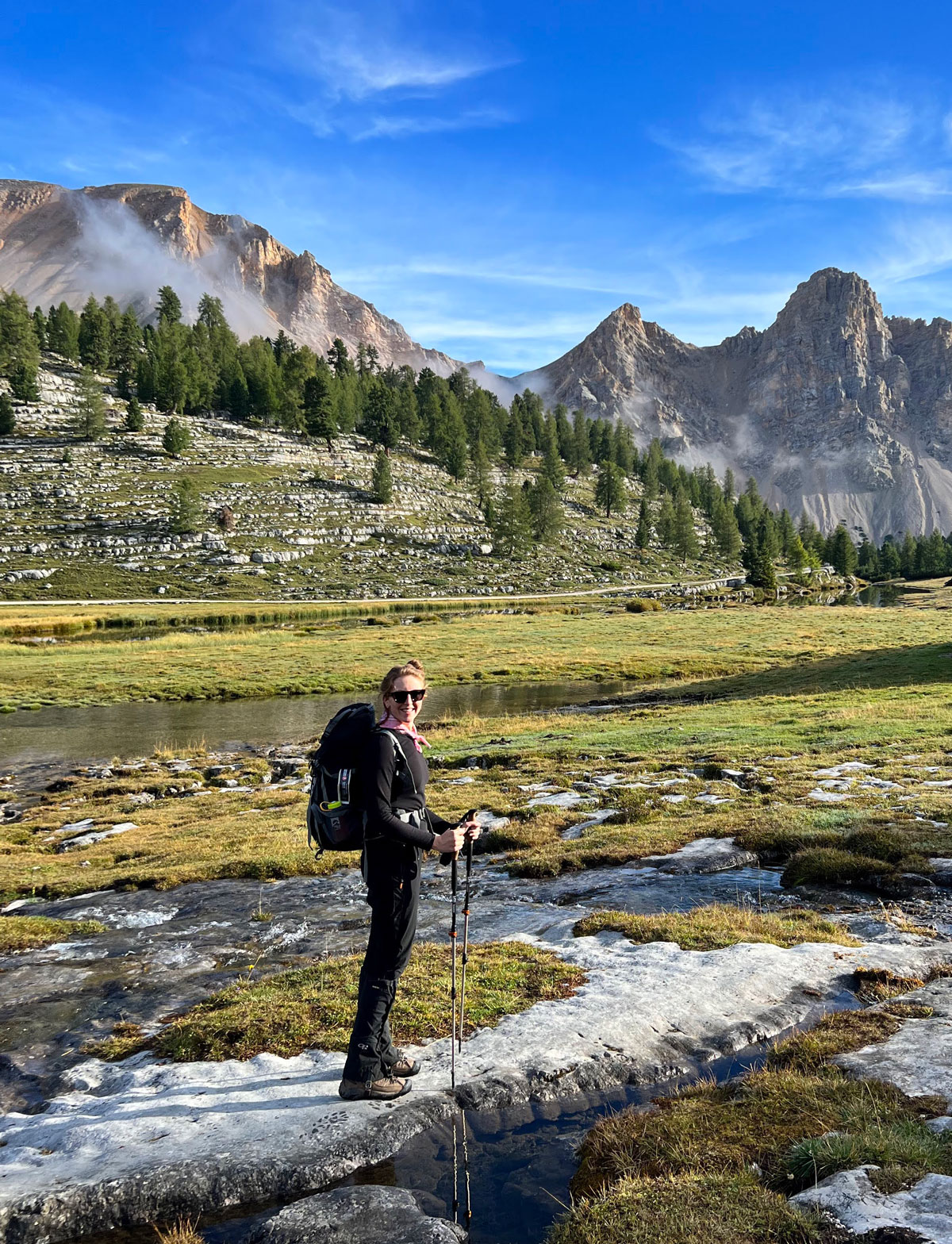
It’s not always going to be perfect. And that’s OK!
One thing that’s important to remember: despite these lofty health aspirations for recreation time, no one’s perfect. Part of health is giving yourself the grace and patience to be human and not stressing too much if you deviate from being an optimal biohacker.
I dealt with this firsthand this summer. On my backpacking trip in Italy, I noticed something funny. A few days in, I was feeling a bit anxious, short-tempered, and bloated, and I had developed some acne. I was frustrated. How could I be feeling so “off” when I was on this incredible trip I’d spent nine months planning and saving for? But the reality of it was that I had stayed up for 36 hours straight, flying from Oregon to Istanbul to Italy. I was jet-lagged. While backpacking, I was staying in hostels with a dozen people in bunk beds snoring and making noise. I was eating foods I almost never eat (that I know affect my gut), like pasta, cheese, bread, gelato, and cow’s milk. I was drinking more alcohol than usual (the wine and Aperol spritzes flow freely in Italy!) I wasn’t doing my daily meditation. My Fitbit battery had died, and my CGM had expired, so I didn’t have a sense of what was going on with my sleep quality, HRV, or glucose levels.
I quickly associated the change in my baseline mood, skin health, and gut with my deviation from my daily health habits. And this realization turned out to be empowering. The mystery was gone. I made small tweaks to get back on track. In the second half of the trip, I avoided bread, dairy, and sugar in favor of Italy’s fresh vegetables, fruits, meats, fish, and eggs. I carved out time for deep breathing and journaling. I employed an eye mask, earplugs, sleep mask, and magnesium threonate for a better chance at uninterrupted sleep. These tweaks got me back on track and were small concessions in my “YOLO” trip mentality.
The learning here is that extended time off, as good as it is for us, can also take us out of our normal routines, which can also disrupt health, as I just described. But once I struck the right balance between my YOLO vibe and my usual habits, I found my trip to be incredibly recharging, and I returned to work feeling a sense of renewal.
The Bottom Line
Time off—specifically unplugged time—is amazing for our minds and bodies, whether taking a dream vacation or just enjoying an evening to recharge and activate the default mode network. When we can incorporate outdoor physical activity into our free time as well, we gain some added benefits to our well-being. I hope that over the next few months, you’re able to find snippets of time to unplug and recharge, too!
